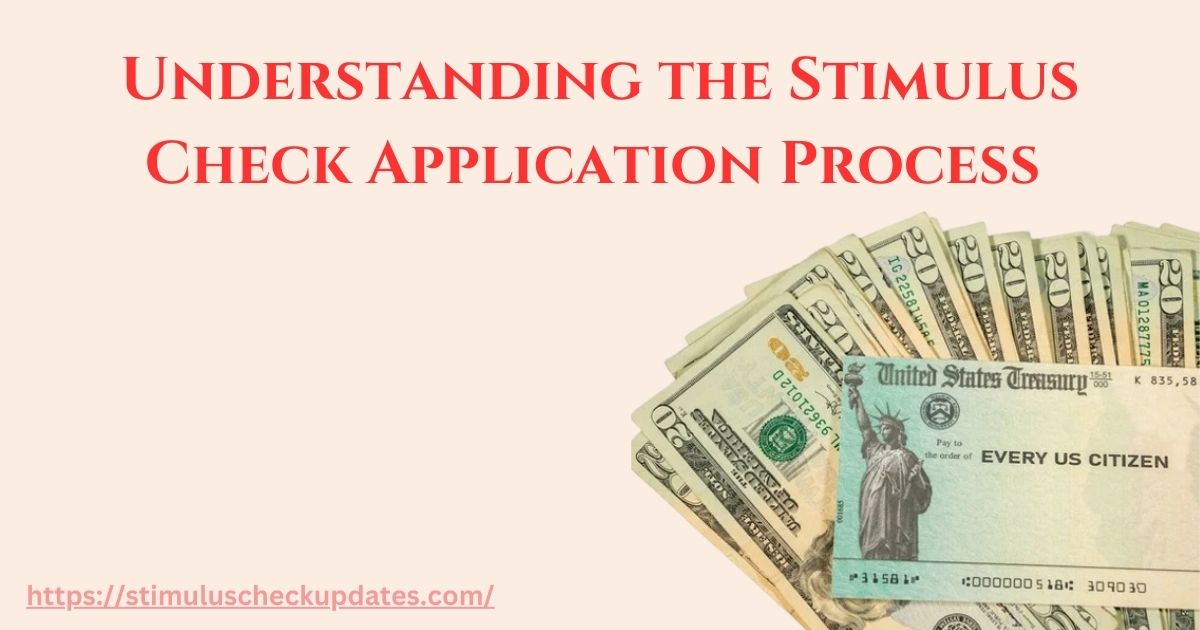In recent years, the U.S. government has issued stimulus checks to provide financial relief to individuals and families struggling due to economic downturns. The stimulus check application process has become a critical knowledge area for many citizens seeking assistance. In this article, we will explore the various aspects of the stimulus check application process in detail, ensuring you understand every step involved.
Table of Contents
ToggleWhat is a Stimulus Check?
A stimulus check is a direct payment from the government designed to help individuals and families cope with financial difficulties, particularly during economic crises. The payments are intended to boost consumer spending, stimulate the economy, and provide a safety net for everyday Americans. Understanding the different types of stimulus checks available and the qualifying criteria is essential for anyone considering applying.
Types of Stimulus Checks
Economic Impact Payments (EIPs)
The most notable form of stimulus checks in recent history is the Economic Impact Payments (EIPs) initiated during the COVID-19 pandemic. These payments came in multiple rounds:
- First Round: Distributed in April 2020.
- Second Round: Distributed in December 2020.
- Third Round: Distributed in March 2021.
Each round of payments varied in amounts and eligibility criteria. Generally, eligible taxpayers received 1,200 for individuals and 1,200 for individuals and 2,400 for couples, with additional payments for dependants.
Eligibility Criteria for Stimulus Checks
Who Qualifies?
To successfully navigate the stimulus check application process, it’s crucial to be aware of the eligibility requirements. Here are the general criteria:
- Income Limits: Generally, individuals earning up to 75,000 and couples earning up to 75,000 and couples earning up to 150,000 are eligible for the full amount. Payments decrease for those with higher incomes.
- Tax Filing Status: Individuals must file taxes to qualify. The payments are based on reported income from the most recent tax return.
- Citizenship: Only U.S. citizens, permanent residents, and qualifying resident aliens are eligible.
Breaking down these criteria helps paint a clearer picture of who can apply for a stimulus check.
The Stimulus Check Application Process
Understanding the stimulus check application process entails knowing how to apply, what information is needed, and what to expect. Here’s a breakdown:
Step 1: Check Your Eligibility
Before applying, confirm whether you meet the eligibility criteria mentioned earlier. It’s essential to know if you are likely to receive a payment and how much you might qualify for.
Step 2: Determine Your Filing Status
Your filing status will affect your eligibility and the amount received. Know whether you will file as a single individual, married filing jointly, head of household, etc.
Step 3: Gather Necessary Documents
The following documents can be useful during the application process:
- Previous year’s tax return
- Social Security numbers (for yourself and dependent)
- Bank account information (for direct deposit)
- Income statements (W-2, 1099 forms)
Having these documents ready simplifies the application process.
Step 4: File Your Taxes
If you haven’t filed your taxes, doing so is essential to receive a stimulus check. The IRS used tax information to determine payment eligibility. You can file your taxes online or through a tax professional.
- Filing Electronically: Using tax software often speeds up the process.
- Using Direct Deposit: Providing your bank information allows for quicker payment processing.
Step 5: Check Payment Status
After filing, you can check the status of your stimulus payment through the IRS’s “Get My Payment” tool. This tool provides information on when to expect your check and whether it has been processed.

Common Issues During the Application Process
While the stimulus check application process is straightforward, some common problems may arise:
Missing Payments
Some individuals may find they did not receive the payment. Reasons can include:
- Filing incorrectly or with inaccurate personal information.
- Not being eligible due to income changes.
If you believe you qualify but haven’t received your payment, you may need to claim it on your tax return as a Recovery Rebate Credit.
Changes in Circumstances
Changes such as marriage, divorce, or the birth of a child can impact eligibility. Keeping the IRS updated through tax filings helps manage any changes effectively.
Steps for Non-Filers
If you do not typically file taxes because your income is low or you are a dependent, you can still apply for a stimulus check through the IRS Non-Filers tool.
Using the Non-Filers Tool
- Visit the IRS website.
- Provide basic information such as your name, address, and Social Security number.
- Enter dependent information if applicable.
Ensure to submit this information promptly, especially during application windows for stimulus checks.
Conclusion
Understanding the stimulus check application process can significantly help individuals and families maximize their financial relief. Being informed about eligibility requirements, documentation, and procedures ensures a smoother application experience.
Conclusion
As the landscape of financial assistance continues to evolve, staying informed about programs available to you is vital. Regularly checking resources such as the IRS website or reliable news sources will keep you updated on any changes to the stimulus check application process.
In light of the importance of the stimulus check application process, making sure to follow the outlined steps can lead to a successful and beneficial outcome. For more detailed information, consider visiting the IRS Official Website and other reliable resources.
